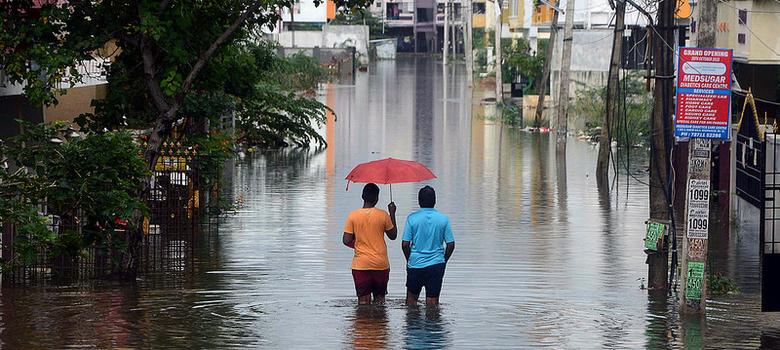
“Chennaiyileh mazha peyyarthilla”(It doesn’t rain there in Chennai), complained my roommate, 2 months ago when we were talking about home. I was from a place where it rained often and I boasted of it. Little did we know that, 2 months in, his city would receive such a rainfall that it will get inundated. This article seeks to analyze :
- The reasons for the Flooding
- The Effects of the Flooding
- The Important and Newsworthy things that happened during the Relief process
Chennai, as we all know is one of the most developed cities in South India. It’s the capital of the state of Tamil Nadu and is also known as the ‘Detroit of India’ because of its prominence in the Automobile Industry. The Detroit of India, however was no match for Nature’s fury and the efforts that were taken to shield the city, turned out in the end to be ineffectual. The Chennai Flood, is not just any ordinary event. It is an event that took place as a result of the concurrence of many events which shall be very briefly but clearly analyzed during the course of this article.
The first most important reason for the flood is obviously the Heavy Rains, which any greasy haired average school boy would know to be a fact. But what they would be quite unaware of would be the reason for just enormous amounts of rain in a place, where people have actually gone to the length of doing Poojas to get at least enough rain for the year. But the heavy rains were not the direct result of these poojas but something else known as El Nino. El Nino literally means ‘The Little Boy’ and was first recognized by fishermen off the coast of South America in the 1600s, with the appearance of unusually warm water in the Pacific Ocean. It is a phase of El Nino- Southern Oscillation (ENSO) cycle, which is a temperature anomaly. This temperature anomaly is caused by the fact that the Pacific Ocean being very large and receiving more sunlight than any other region of the Earth stores this energy in the form of heat. The ‘Pacific Trade Winds’ which blow from east to west, pushing the warm water towards west, where they eventually form a large deep pool just east of Indonesia. As the warm surface water in the Pacific shifts thousands of miles west of its normal location, the rain and thunderstorms resulting from the convection above this warm tropical water also changes its location.
Go to Page 2 to read full article

